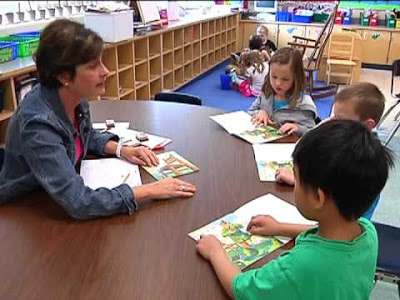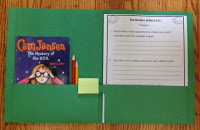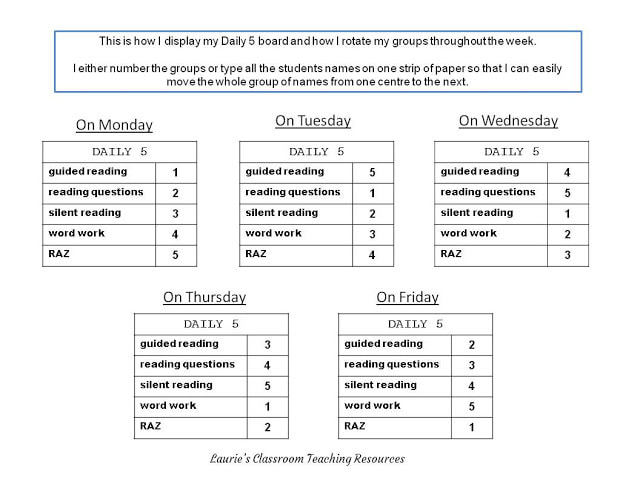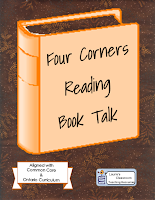Help your Students with these Guided Reading Tips and TechniquesThis blog focuses on guided reading which involves a teacher working with a small group of students who have similar reading abilities. I feel this is an important subject for a blog because there are many different approaches used by teachers and questions about which approaches work. The following details how I approach guided reading in my Grade 2 and 3 classes.  Running Record Prior to beginning a guided reading program, I conduct a running record for each student. This entails assessing each student’s reading level. Our school supplies Nelson’s PM Benchmark Reading Assessment Resource which consists of short fiction and non-fiction texts along with comprehension questions which enable you to assign a reading level for each student. Organizing Tips Reading Level Chart I create a chart on the inside of a file folder with columns on both sides where I record the reading level for each student.
Student Guided Reading Pocket Folder I give each student their own pocket folder in which they keep their guided reading book, the comprehension questions, a pencil and a small quantity of Post-its (2”x 1½”) which they use to write down unfamiliar words and then stick it on the edge of the page where the word is first located in the book.
How Often I meet with each group once a week for twenty minutes unless I have a group that is reading well below grade level which I meet with twice a week. I organize my class into five groups because I run my Daily 5 centres (guided reading being one of the centres) on a Monday to Friday schedule and the students go to one centre per day. I feel this is sufficient because students are exposed to other reading activities during their individual Daily 5 language activities. For example, the other four groups could be doing word work, independent/silent reading, completing comprehension questions and a computer reading comprehension activity called “RAZ”. Independent/Silent Reading Assessment Tip As part of independent/silent reading, students are expected to write a letter to me every time they complete a chapter (or a small picture book) which describes a connection or prediction (whichever reading strategy we are focusing on that month) they’ve made to the book. I give the students a letter template with paragraph starters for them to explain the reading strategy. All Daily 5 activities are displayed on a pocket chart in the class. Each group is assigned a number which I rotate in the chart daily to show what activity they will be doing on a particular day. What to do during Guided Reading At your first meeting with each group, hand out to each student their pocket folder with their name on it and ask the students to remove the guided reading book. After reading the title and looking at the front cover, I ask them in a group discussion setting to predict what they think the story will be about and their reasoning. If the students are not supplying a reason, I make sure to model how they should make the prediction making sure to use the words “I think that” and “I think this because”. I then review any words from the book that I feel they would not know. This is the time that I explain why they each have small Post-its and how they are to use them to identify words they are unfamiliar with. Next, I explain that when they are silently reading, I will be going to each student and leaning in close so they can softly read out loud. At this time I can assess their reading level and fluency. After I have listened to each student, I allow the students to continue silent reading until the end of the 20 minutes. If they haven’t completed the assigned reading (either a small book or the first chapter), they need to finish it for homework that evening. I use Guided Reading Assessment and Anecdotal Notes, which is for sale in my TpT store, to record each student’s reading assessment. The next day, before I begin the session with Group 2, I give Group 1 their reading comprehension questions which they complete during this 20 minute period. In week two, when I meet with the groups for a second time, I review any words that they have noted, and discuss the reading comprehension questions with the group. I would ask a student to read out their answer as a starting point for a discussion by asking the other students if they agreed. Once completed, the students would begin silently reading the next chapter. While the students are reading, I record my observations on fluency, rate of reading, ability to answer questions and which type of questions they are having difficulties answering. While this approach may seem to focus on reading comprehension questions, the questions have been structured to include reading strategies in addition to the who, what, where, when, why and how comprehension type questions. Reading strategies include predicting, connecting, visualizing, summarizing and inferring. My language block is broken up into three separate time slots: Daily 5; writing; and reading. During the reading portion, I give individual lessons on the reading strategies so that the students understand how to use them while reading.
Student Reading Assessment
Assessing student’s reading for report cards is something many teachers struggle with. My approach is to assess a variety of different reading activities which together determine the final assessment. These activities include:
I have developed my own reading comprehension units to use during my guided reading program. If you are interested in this guided reading approach, which I have found to be very successful in progressing a student’s reading level, please go my TpT store, Laurie’s Classroom, and check out my units. I have a number of novel study and reading comprehension products. A few examples of each are:
Happy teaching. Laurie
0 Comments
Leave a Reply. |



